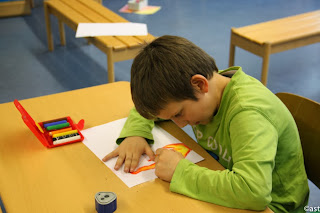
World Environment Day at „Petka“ School
Hooray! For the second time we have succeeded in the challenge grant „GET INVOLVED!“ This challenge Tereza Association announced financial support of Provident Financial Company. Last year we wanted to improve the school environment and were able to start building the playground at our school. This year we focused on analyzing the operation of the school. Pupils and teachers of our Ekoteam in Šumperk have recorded a video "A drop in Action", in which they explain their intention to mount water meters at school to monitor water consumption in specific parts of it (for example in classrooms, cabinets, sanitary facilities or gyms). Although it was the first time we asked for a grant in this way, we were able to meet predetermined criteria and take a sponsor. Organizers supported our project in the amount of 10 000 CZK. For this money 4 new meters were installed in our school.
The project also included an arrangement of educational events for fellow students and children from nearby nurseries. We prepared the celebration of the World Environment Day dedicated to water for them. During the day you could see an exhibition of art works inspired by the water, try out interesting experiments to determine the different physical and chemical properties of water, make your octopus from PET bottles, or play fishermen. We invited a representative of the company SPVS to explain to children the use of water meters not only at school but also at home.
Do we need more water meters?
In the very first week of operation of new water meters disproportionate consumption of water at the gym resulted. On this basis, a correction of pressure flushing toilets was done. Without the meter we wouldn´t find it out. The status of all four water meters will be regularly checked by pupils.

























































